Manage Secrets
BrowserStack Low Code Automation enables you to securely store confidential data and use them while recording tests.
When you run tests on Low Code Automation, you may need to provide sensitive information, such as login credentials or credit card details. Low Code Automation lets you create Secrets to handle this securely.
Secrets are confidential data stored as a name and value pair. These are masked to protect your information. When you create a Secret, it gets encrypted and stored in the backend database. You can then use these secrets safely during test execution. It ensures your sensitive data remains protected.
Low Code Automation allows you to create, import, edit and delete secrets.
The Secrets feature in Low Code Automation is available only with BrowserStack Pro plans.
Create Secrets
Follow these steps to create secrets:
-
Open Low Code Automation and click Secrets in the left pane.
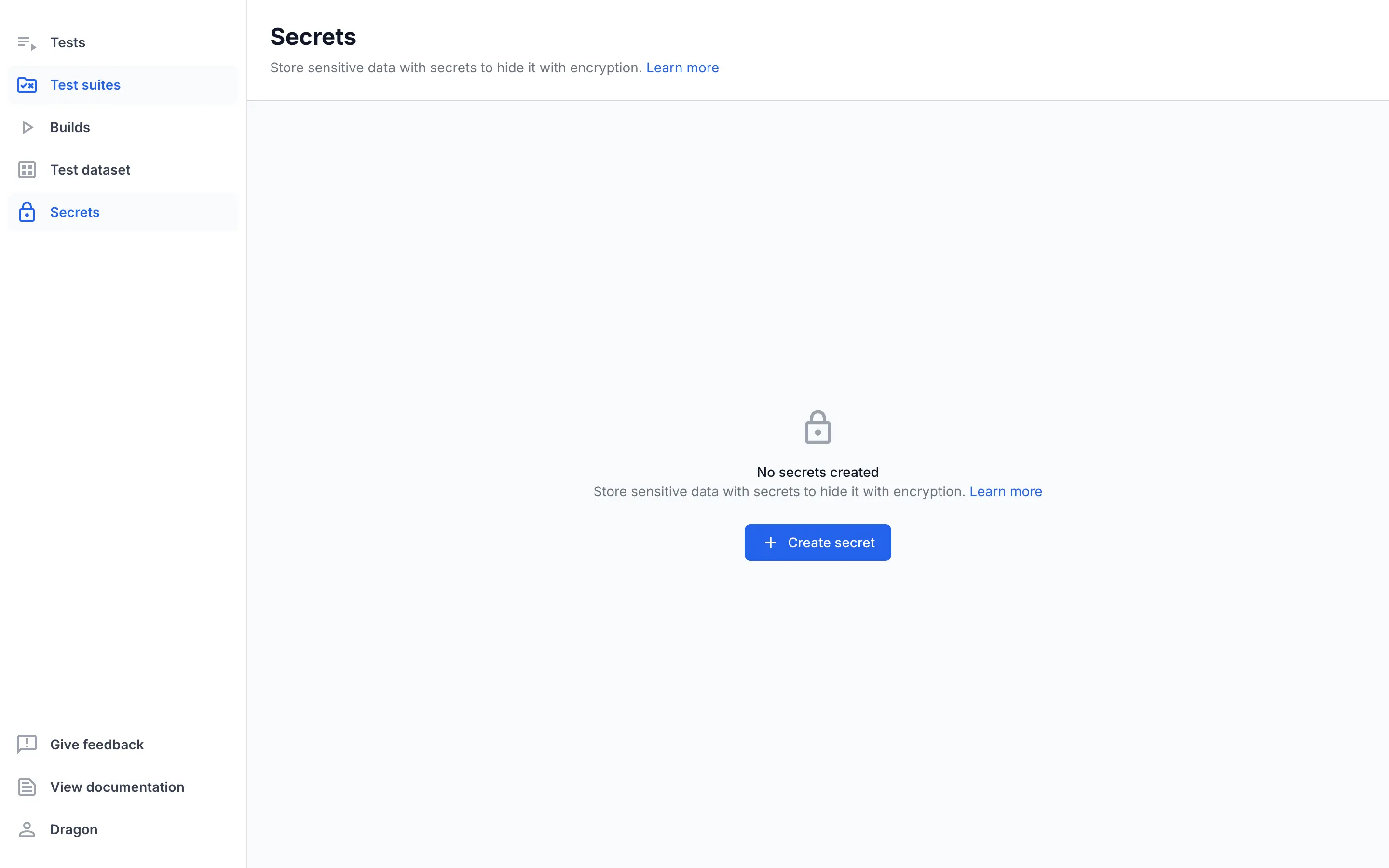
-
On the Secrets page, click + Create secret.
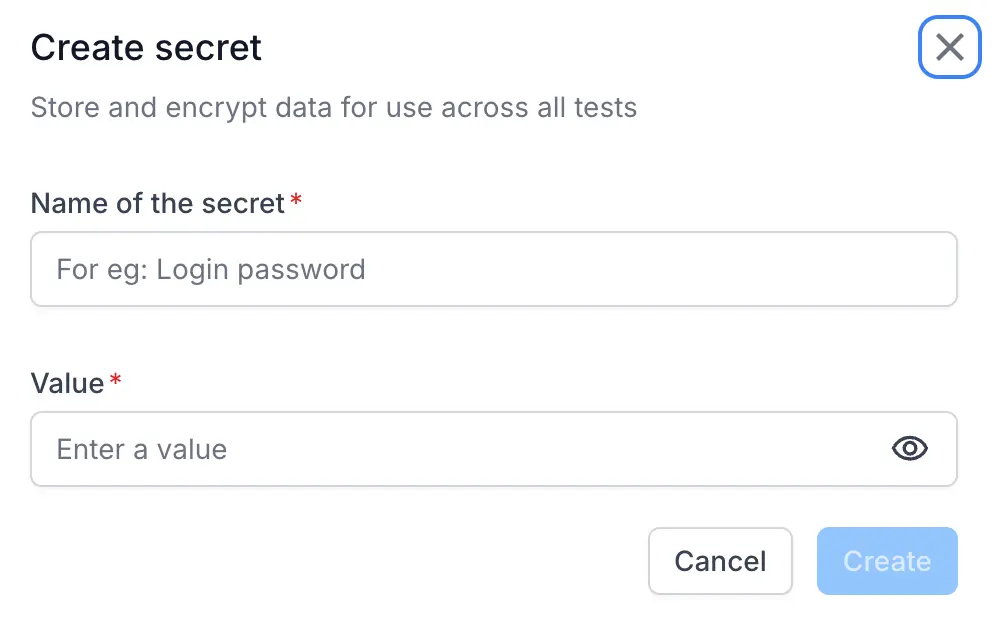
-
On the Create secret dialog, enter a name and value for the secret. Ensure that the name is unique. Note that the value entered is always masked.
-
Click Create. The secret will be successfully created.
Alternatively, you can create a new secret directly on the step page during test recording. You can do so by selecting Convert to secret from the dropdown menu.
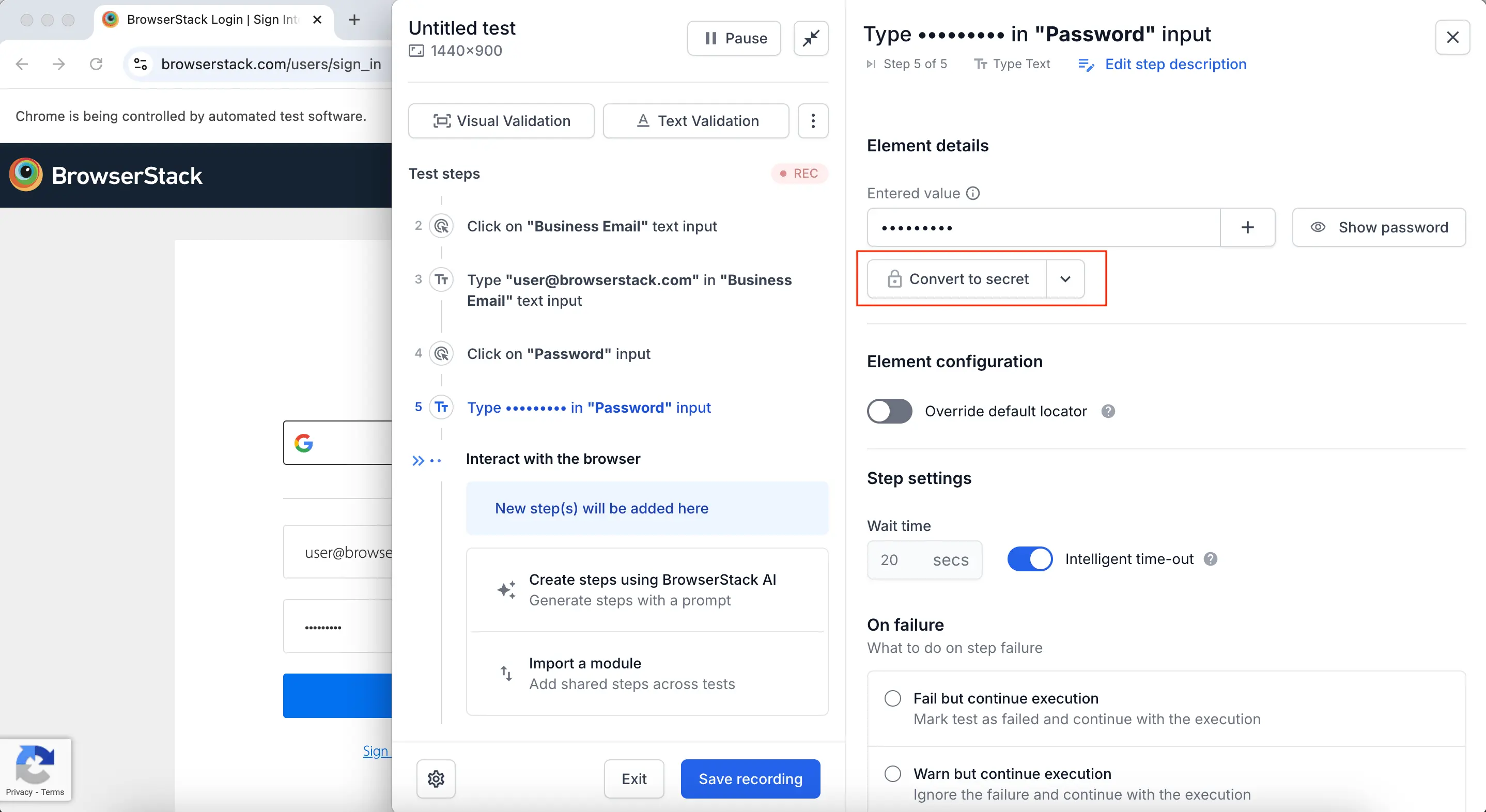
You can now import these secrets into your tests.
Import Secrets
Follow these steps to import secrets:
- In the Low Code Automation recorder, navigate to the step where you want to import the secret.
-
Click the + icon under Entered value, then select Import a variable/secret. The Import variable/secret dialog will appear.
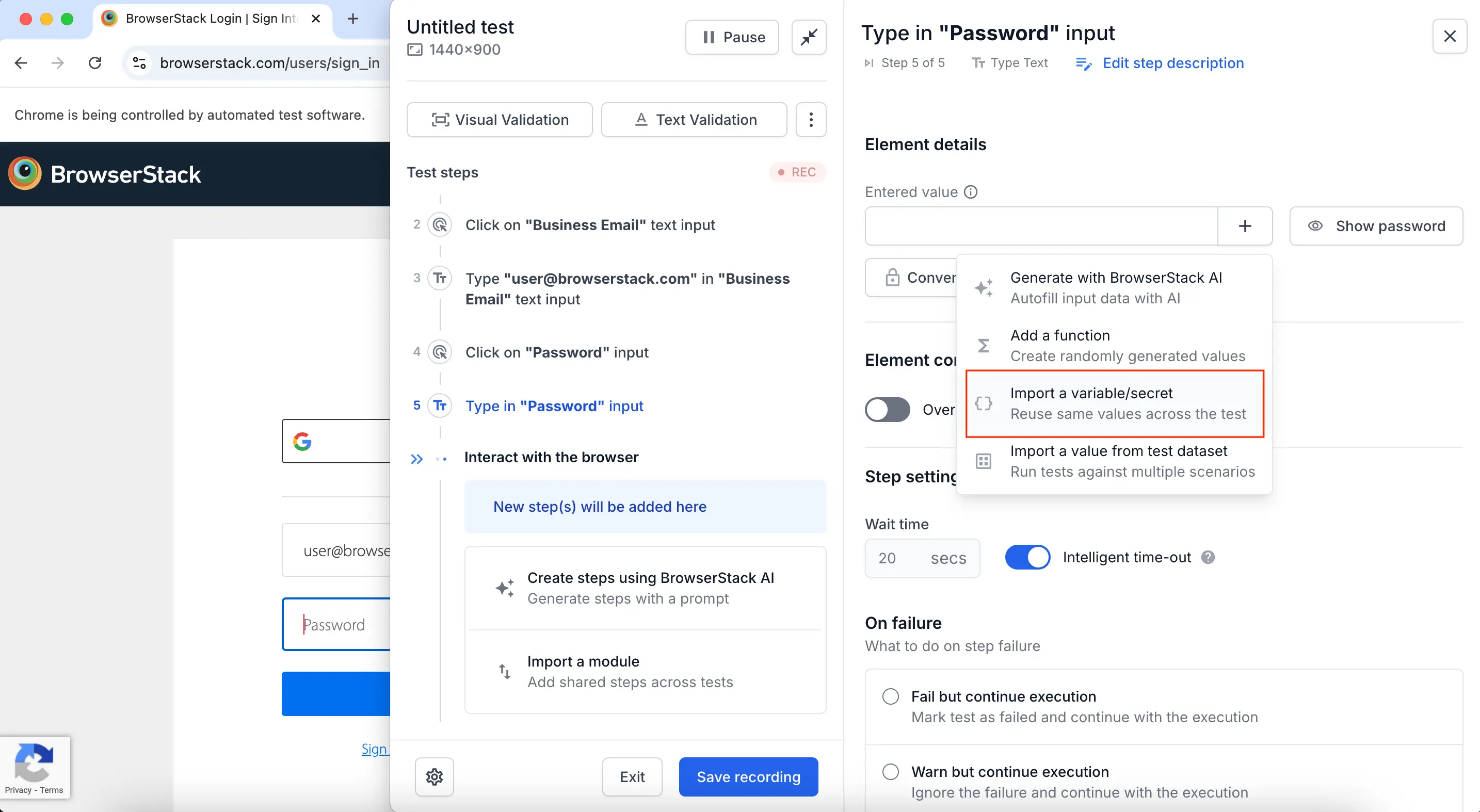
-
Click the Secrets tab and select the desired secret. The secret will be successfully imported.
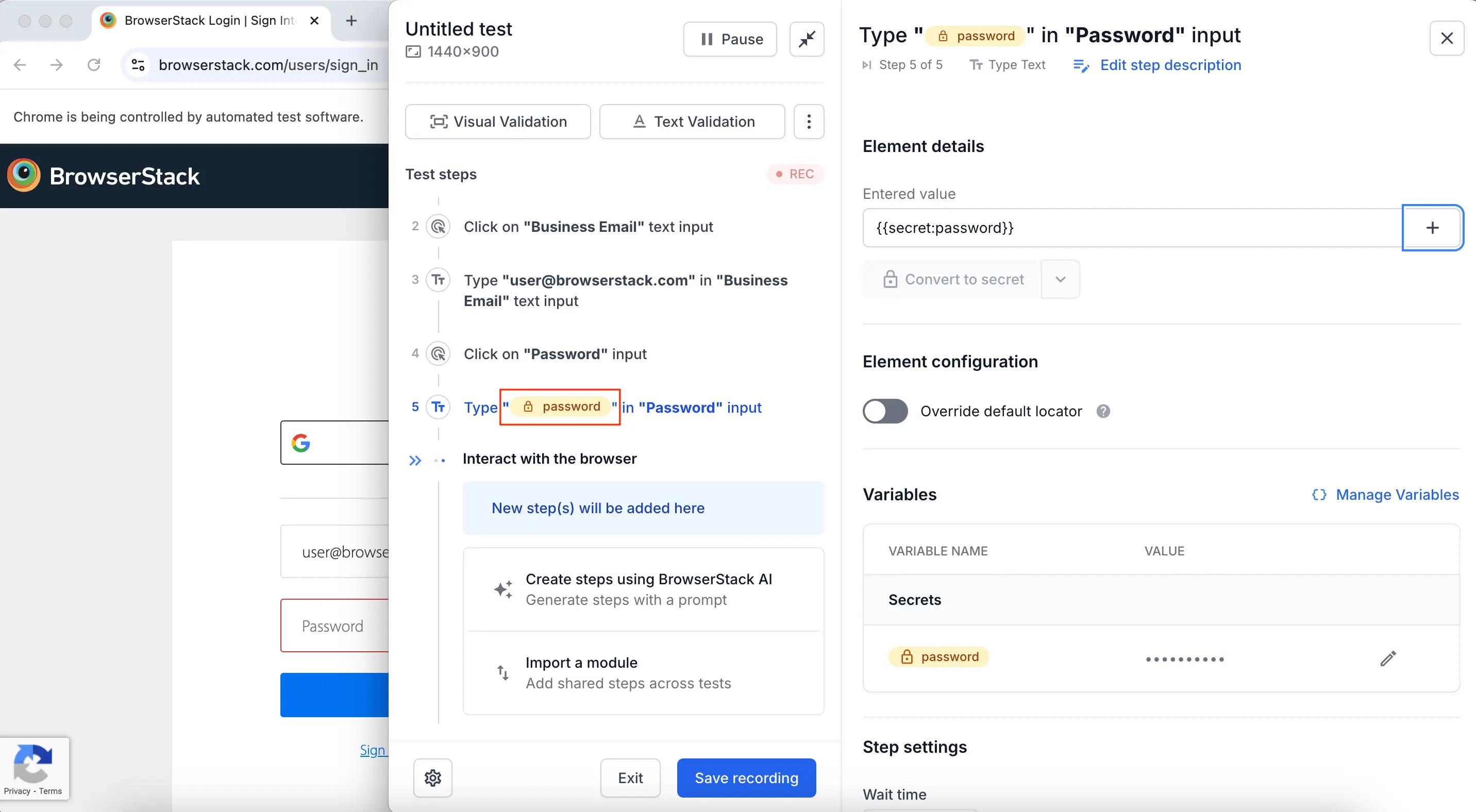
-
You can also import secrets in API steps. Click Call API under test steps.
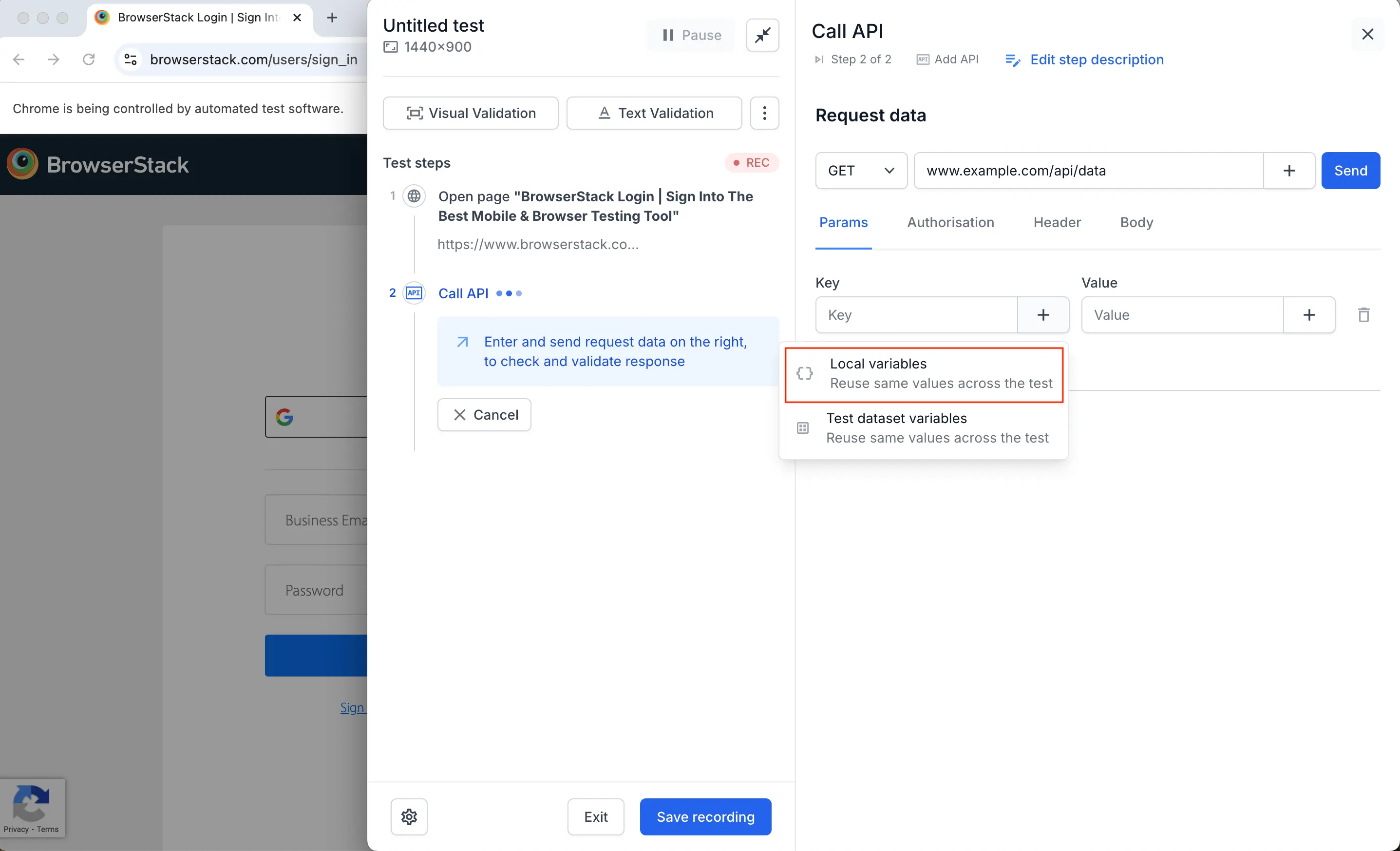
- Click the + icon for any required elements, such as Key, Value, Username, or Password, and select Local variables. The Import variable/secret dialog will appear.
- Select the appropriate secret to import in the step.
View and manage Secrets
Follow these steps to view, edit and delete secrets:
-
Open Low Code Automation and click Secrets in the left pane. The Secrets page will display a list of created secrets.
-
Click the text in the USED IN column. It displays the tests and modules where each secret has been utilized.
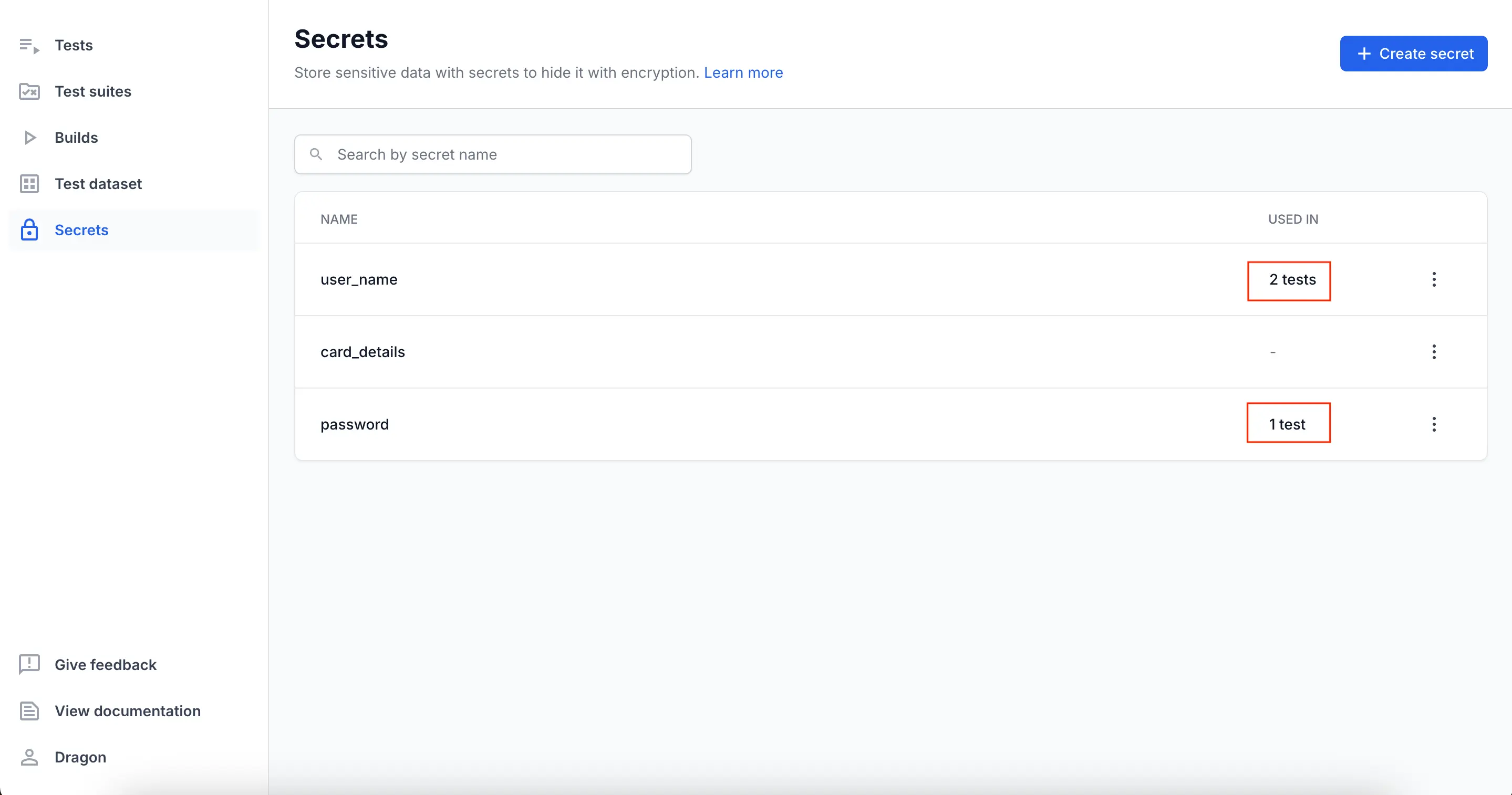
- You can use the search bar to find secrets by name.
- Click the Ellipsis icon to access additional options.
- Edit secret: Allows you to modify the value of the secret.
- Delete secret: Allows you to delete the secret if it is not used in any test or module.
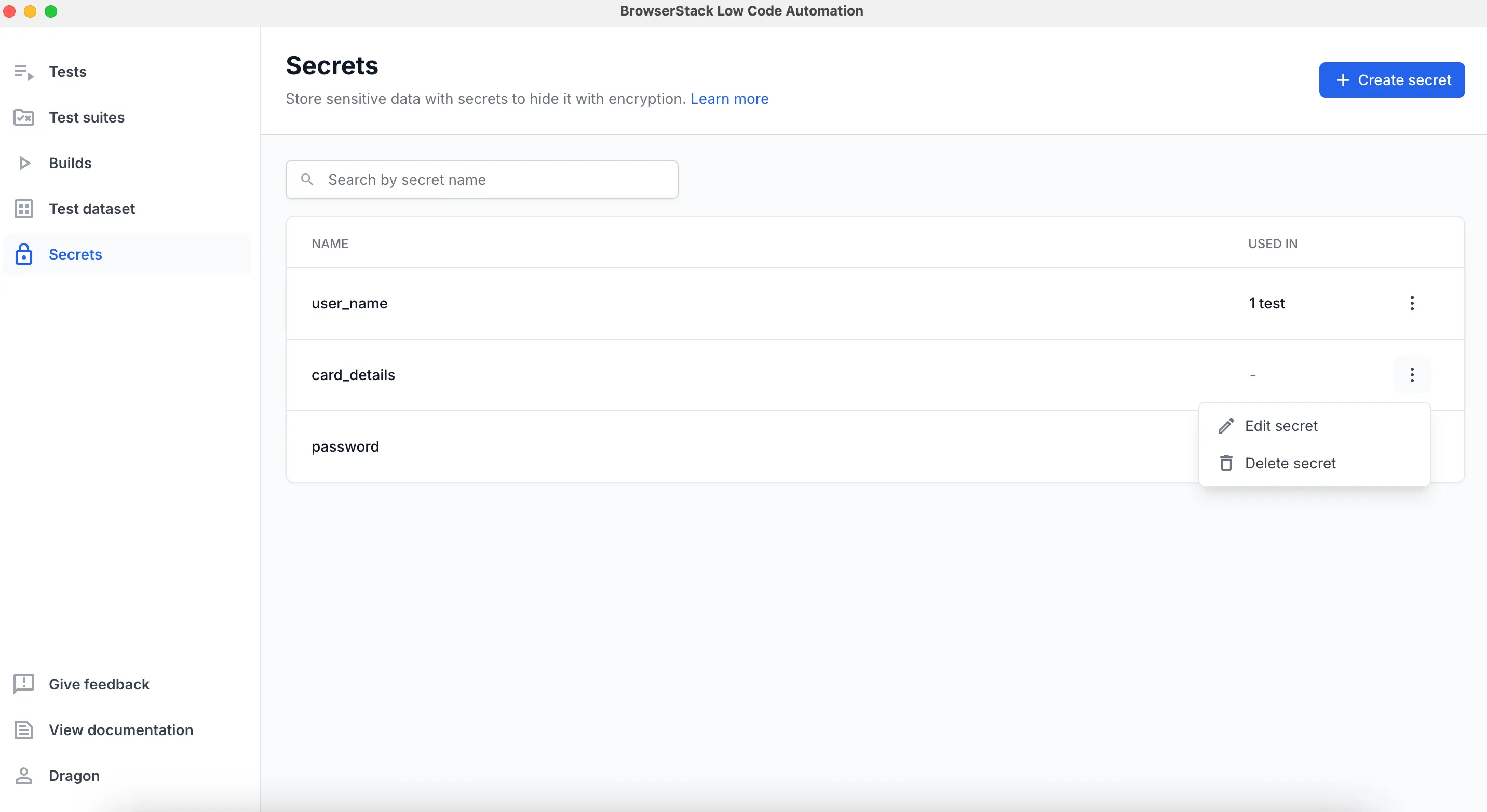
- Modifying a secret will impact any tests that utilize that secret.
- Deleting a secret is permitted only if it is not referenced in any tests or modules.
We're sorry to hear that. Please share your feedback so we can do better
Contact our Support team for immediate help while we work on improving our docs.
We're continuously improving our docs. We'd love to know what you liked
We're sorry to hear that. Please share your feedback so we can do better
Contact our Support team for immediate help while we work on improving our docs.
We're continuously improving our docs. We'd love to know what you liked
Thank you for your valuable feedback!
